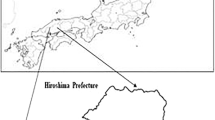Abstract
The Teton Dam in Southeastern Idaho collapsed on June 5, 1976. The resulting flood damaged a large area and caused the release of toxicants into the Snake River. A pesticide recovery team in a helicopter worked the flooded area for three weeks and collected 1,104 containers, about 35% of which contained toxicants. It was estimated that less than 60% of the lost pesticide containers were recovered.
This paper addresses the results of a one-time sampling effort designed to determine the magnitude of the chemical contamination. Over 300 samples of fish, plankton, waterfowl, sediments, water, stream drift, aquatic plants, and soil were taken. Pesticide residues were measured asμg/kg (ppb) wet weight, whole animal basis. Rainbow trout had as much as 1432μg/kg total DDT plus analogs, 66μg/kg dieldrin, and 1010μg/kg PCBs. Utah suckers had up to 1420μg/kg total DDT plus analogs, 32μg/kg dieldrin, and 1800μg/kg PCB. Rocky Mountain whitefish had as much as 2650μg/kg total DDT and analogs, 30μg/kg dieldrin and 1400μg/kg PCBs. These PCB and DDT levels were high, approaching the 2,000μg/kg FDA proposed tolerance, but were below the 5,000μg/kg present tolerance. Dieldrin levels were low and organophosphates were undetectable.
An undeveloped area (the Fort Hall Bottoms) showed higher levels of contaminants than did an industrialized area (the lower Portneuf River). This apparent discrepancy remains unexplained.
Very little pre-flood data on a whole fish basis were available for comparison (Johnsonet al 1977). However, it does not appear that any human health hazard due to pesticide levels exists in this portion of the Snake River.
Similar content being viewed by others
References
Dennis, D. S.: Polychlorinated biphenyls in the surface waters and bottom sediments of the major drainage basin of the United States.In F. A. Ayer (ed.): National Conference on Polyclorinated Biphenyls. p. 183. U.S. EPA Office of Toxic Substances, Washington, D.C. (1976).
Haile, C. L., G. D. Veith, G. F. Lee, and W. C. Boyle: Chlorinated hydrocarbons in the Lake Ontario ecosystem (IFYGL). U.S. EPA Ecological Research Series, EPA-660/3-75-002 (1975).
Hamelink, J. L., and R. C. Waybrant: DDE and Lindane in a large-scale model lentic ecosystem. Trans. Am. Fish. Soc.105, 124 (1976).
Hogan, J. W. and J. L. Brauhn: Abnormal rainbow trout fry from eggs containing high residues of a PCB (Aroclor 1242). Prog. Fish. Cult.37, 229 (1975).
Johnson, D. W., J. C. Kent, and D. K. Campbell: Availability and concentration of pollutants from American Falls Reservoir sediments to forage and predaceous fishes. Idaho Water Resources Research Institute, University of Idaho, Moscow, Idaho (1977).
Merrell, J. E., and O. L. Onstott: Reconnaissance report of erosion and sedimentation in the Portneuf River Basin, Idaho. U.S. Department of Agriculture, Soil Conservation Service, Boise, Idaho (1965).
Nebeker, A. V.: Summary of recent information regarding the effects of PCBs on freshwater organisms.In F. A. Ayer, (ed.): National Conference on Polychlorinated Biphenyls. p. 284 U.S. EPA Office of Toxic Substances, Washington, D.C. (1976).
Nisbet, I. C. T. and A. F. Sarofim: Rates and routes of transport of PCBs in the environment. Environmental Health Perspective,1:21–38 (1972).
Schoor, P. W: Theoretical model and solubility characteristics of Aroclor 1254 in water: Problems associated with low solubility compounds in aquatic toxicity tests. EPA Ecological Research Series, EPA 660/3-74-013 (1974).
Thompson, J. F.: The Manual of Analytical Methods: Pesticide Communities Study Lab., U.S. EPA, Office of Research and Development, Health Effects Research Lab., Research Triangle Park, NC. U.S. EPA 600/1-76-017 (1976).
Warlen, S. M.: Accumulation and retention of DDT by Atlantic Menhaden,Brevoortia tyrannus. Ph.D. dissertation, N.C. State Univ. (Raleigh). 116 p. (Diss. Abstr. Int. B. Sci. Engr. 1976, 36 (7)). (1974).
Warlen, S. M., and D. A. Wolfe: A linear DDT flux model for Atlantic Menhaden. Paper presented at the 39th Annual Meeting of Amer. Soc. Limol. Oceanogr., Savannah, Georgia, June 21–24, 1976.
Author information
Authors and Affiliations
Rights and permissions
About this article
Cite this article
Perry, J.A. Pesticide and PCB residues in the upper Snake River ecosystem, Southeastern Idaho, following the collapse of the Teton Dam 1976. Arch. Environ. Contam. Toxicol. 8, 139–159 (1979). https://doi.org/10.1007/BF01056320
Received:
Accepted:
Issue Date:
DOI: https://doi.org/10.1007/BF01056320




